Hope EVO Brakes
Intended Use: Enduro / DH
Fluid: DOT
Pistons: 2 x 18 mm + 2 x 17 mm
MSRP: $314 / £240 / €301.50 (per brake, w/ kevlar hose)
Stated Weight: n/a
Intended Use: Trail / All-Mountain
Fluid: DOT
Pistons: 2 x 17 mm + 2 x 16 mm
MSRP: $294.40 / £225 / €282.60 (per brake, w/ kevlar hose)
Stated Weight: n/a
Intended Use: XC
Fluid: DOT
Pistons: 2 x 22 mm
MSRP: $268.20 / £205 / €257.50 (per brake, w/ kevlar hose)
Stated Weight: n/a
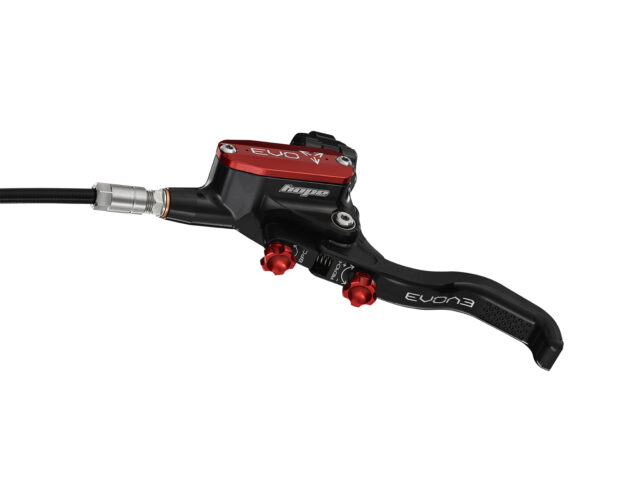
Intro
Hope made a huge step forward with their brakes when they launched the Tech 4 lineup a few years ago. The Tech 4 brakes are massively more powerful than the Tech 3 versions they replaced, and got a host of other refinements as well.
The Tech 4 brakes are now getting replaced by the new EVO lineup, and while Hope is describing the changes more as refinements of the Tech 4 recipe rather than a complete overhaul of the lineup, there’s a lot that’s new — and promising looking — about the new brakes. Let’s get into it.
Design & Features — EVO Lever
As with the Tech 4 series of brakes that the EVO line replaces, Hope uses a shared lever assembly that can be paired with three caliper options to suit different applications. Hope describes the EVO lever as an update to the Tech 4 one rather than a complete redesign, but while the two look very similar, a lot of the details have been tweaked.
The EVO lever is still machined from aluminum in Hope’s UK facility, and the overall form factor is pretty much the same as the Tech 4 one. It comes in left- and right-hand specific versions and uses a hinged lever clamp with a single bolt, with tool-free reach and contact point adjusters on the front of the lever assembly.
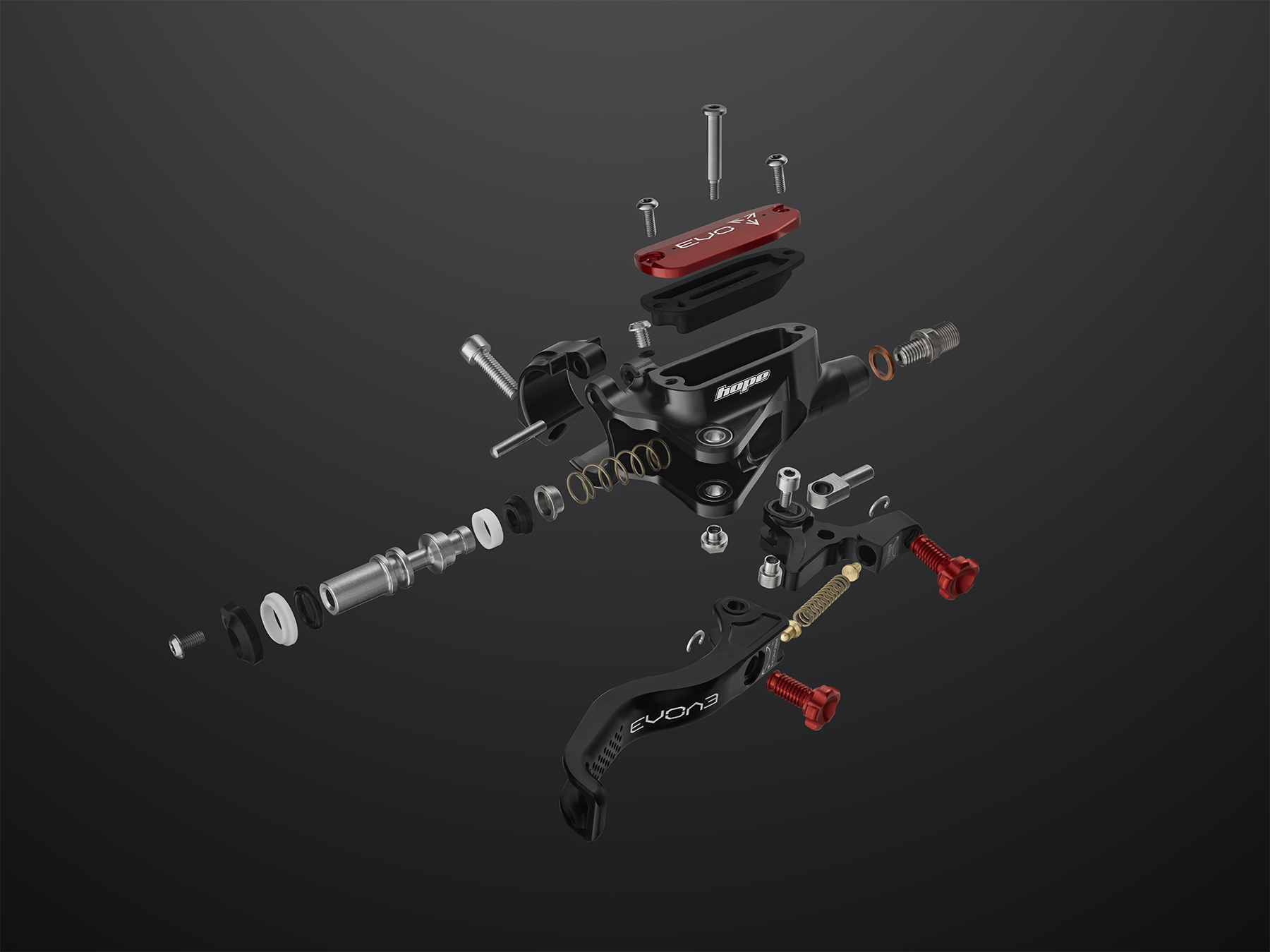
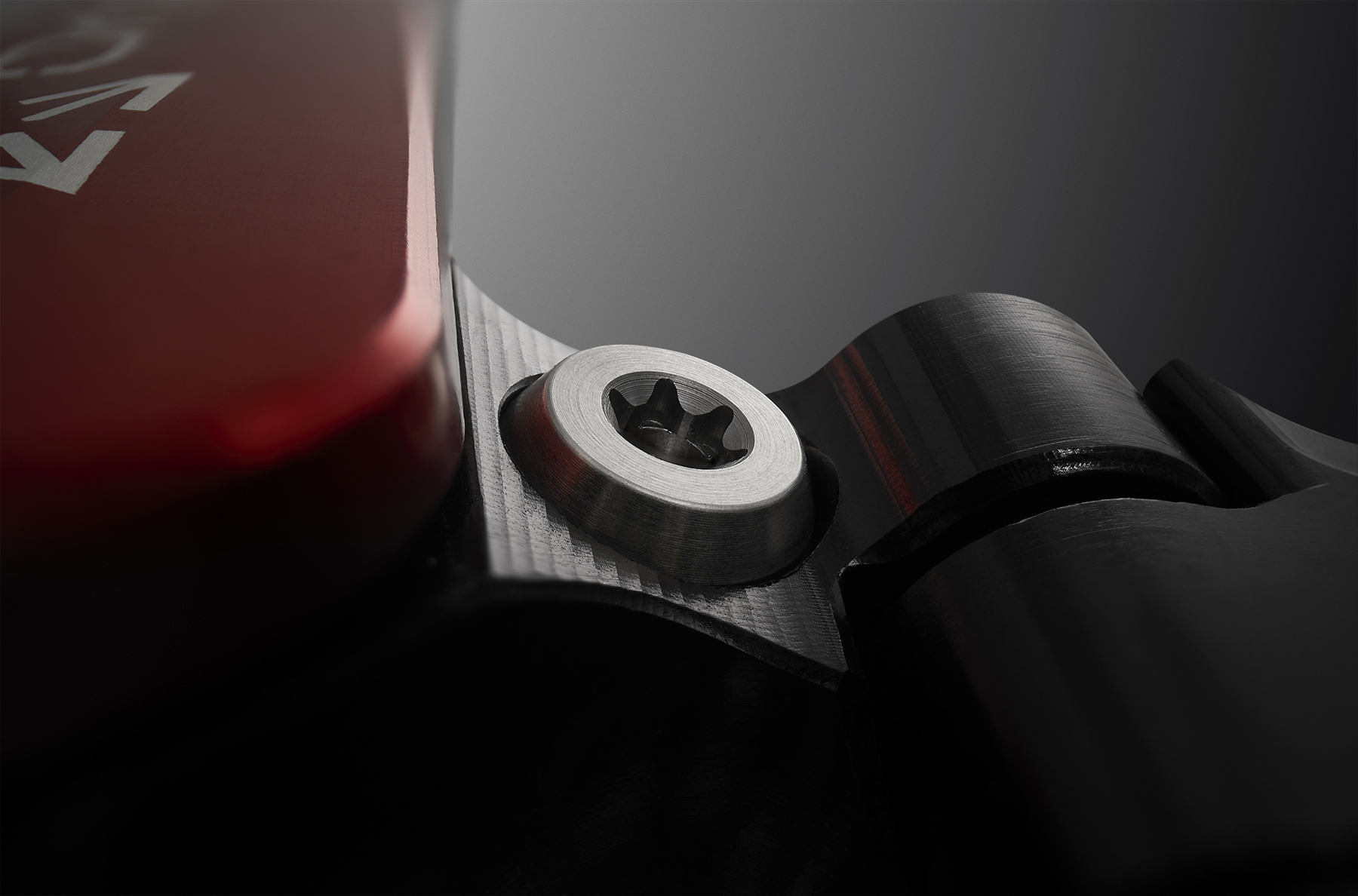
There are more changes internally. Hope has revised the cam profile in the lever to shorten the free stroke and make the bite point firmer compared to the Tech 4 lever, and has tweaked some of the other lever internals to reduce friction and make for a more consistent lever feel.
Hope has also changed the EVO lever blade — and in fact, offers three different versions of it. Compared to the Tech 4 lever blade, the new ones all get a larger hook at the end of the lever for a more secure grip, and redesigned dimples for better feel.
The three lever blade options are differentiated by their overall length and ideal reach range. The Standard lever blade is the middle option of the three, and is included with the brakes. The Power and Control lever blades are sold separately. The Power lever is slightly longer than the Standard one and offers a bit longer reach range; the Control option is the shortest of the three and is designed for folks who run their brakes close to the bar. The longer Power lever should add a touch more power than the Standard one, and the shorter Control lever would have a slightly shorter free stroke, though the overall length differences are pretty subtle.
Hope has a chart to help folks pick the best option for them based on their preferred reach setting (measured from the center of the bar to the hook on the lever blade), shown below:
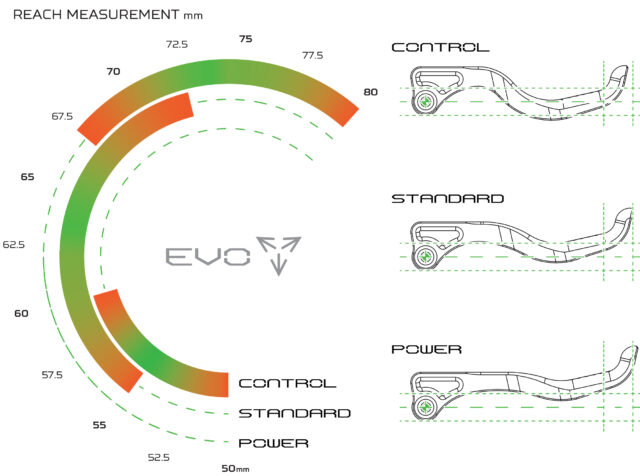
EVO GR4 Caliper
The new GR4 caliper replaces the V4 as the biggest, most powerful option in Hope’s lineup. The two look similar and share Hope’s typical one-piece machined construction, but there are a few notable changes.
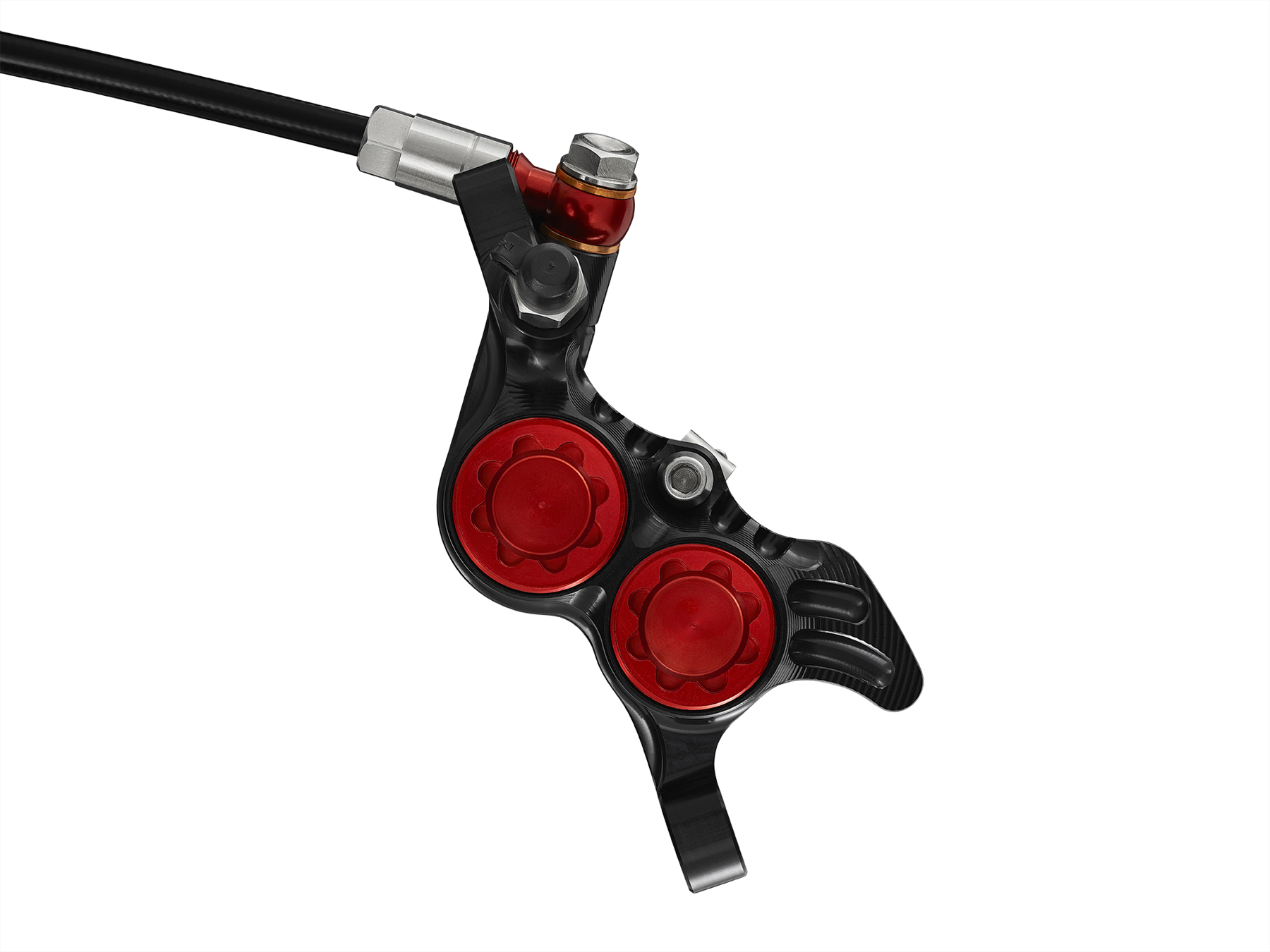
First off, the GR4 caliper gets slightly larger pistons than the V4 one, with two 18 mm pistons and two 17 mm ones (compared to two 18 mm and two 16 mm on the V4). That makes for about 6% more piston area and a corresponding power bump compared to the V4 caliper. The GR4 caliper uses the same V4 pad shape that has been in the Hope lineup for a long time now.
Hope has also dropped compatibility with their 3.3mm-thick vented rotors. Making the V4 caliper compatible with both the vented rotors and thinner conventional ones made the caliper wider and less stiff than it could be if it were designed for a narrower range of rotor thicknesses. Hope decided to optimize for the setup the vast majority of people run, so the vented rotors are out.
EVO TR4 Caliper
Moving down the line, we get to Hope’s new Trail / All-Mountain caliper, the TR4. It replaces the E4 in the lineup and, as with the GR4, gets a bump up in piston size (two 17 mm and two 16 mm pistons vs. four 16 mm ones). That’s good for a 6.5% bump in piston area; to make for more even pad wear and better heat management, Hope has also bumped up the pad size on the TR4 so that it now uses the same pad shape as the GR4 (which, again, is the same one that’s been used in the V4 for a long time now).

X2 Caliper
Finally, at the most XC-oriented end of the spectrum, is the X2 caliper. This one carries over unchanged from the Tech 4 series of brakes; it’s a two-piston design with 22 mm diameter pistons and its own, smaller pad shape.

Some Questions / Things We’re Curious About
(1) The new EVO lever looks like a nice update to the Tech 4 one, not least because it now has a dedicated bleed port. But how much of a difference do the internal updates make to the brake performance and lever feel?
(2) What about the new lever blade options? How different do they feel (both compared to each other and the outgoing Tech 4 lever), and who is going to be best suited by which version?
(3) The GR4 and TR4 both get bigger calipers with more piston area than the V4 and E4 calipers that they replace, respectively. How noticeable is the difference in power that results?
Bottom Line (For Now)
The Hope Tech 4 V4 is already one of the most powerful brakes on the market (and one that we’re big fans of) so, while the changes to the new EVO lineup look more like a refinement of the Tech 4 recipe than a complete overhaul of Hope’s brake lineup, we aren’t complaining. The updates look like sensible ones, and we’re excited to see what the changes offer in performance and ease of service..
Hope says they’ll be available in September 2025, and we’ll start testing them as soon as they’re ready to go. Stay tuned to see how it goes.
Flash Review: Our Initial On-Trail Impressions
BLISTER+ members and those who purchase our Digital Access Pass can check out the Flash Review below to read our initial on-trail impressions. Get our Digital Access Pass to view all our Flash Reviews and Deep Dives, or become a BLISTER+ member today to get access to that and a LOT more, including the best worldwide Outdoor Injury Insurance, exclusive deals and discounts on skis, personalized gear recommendations from us, and much more.
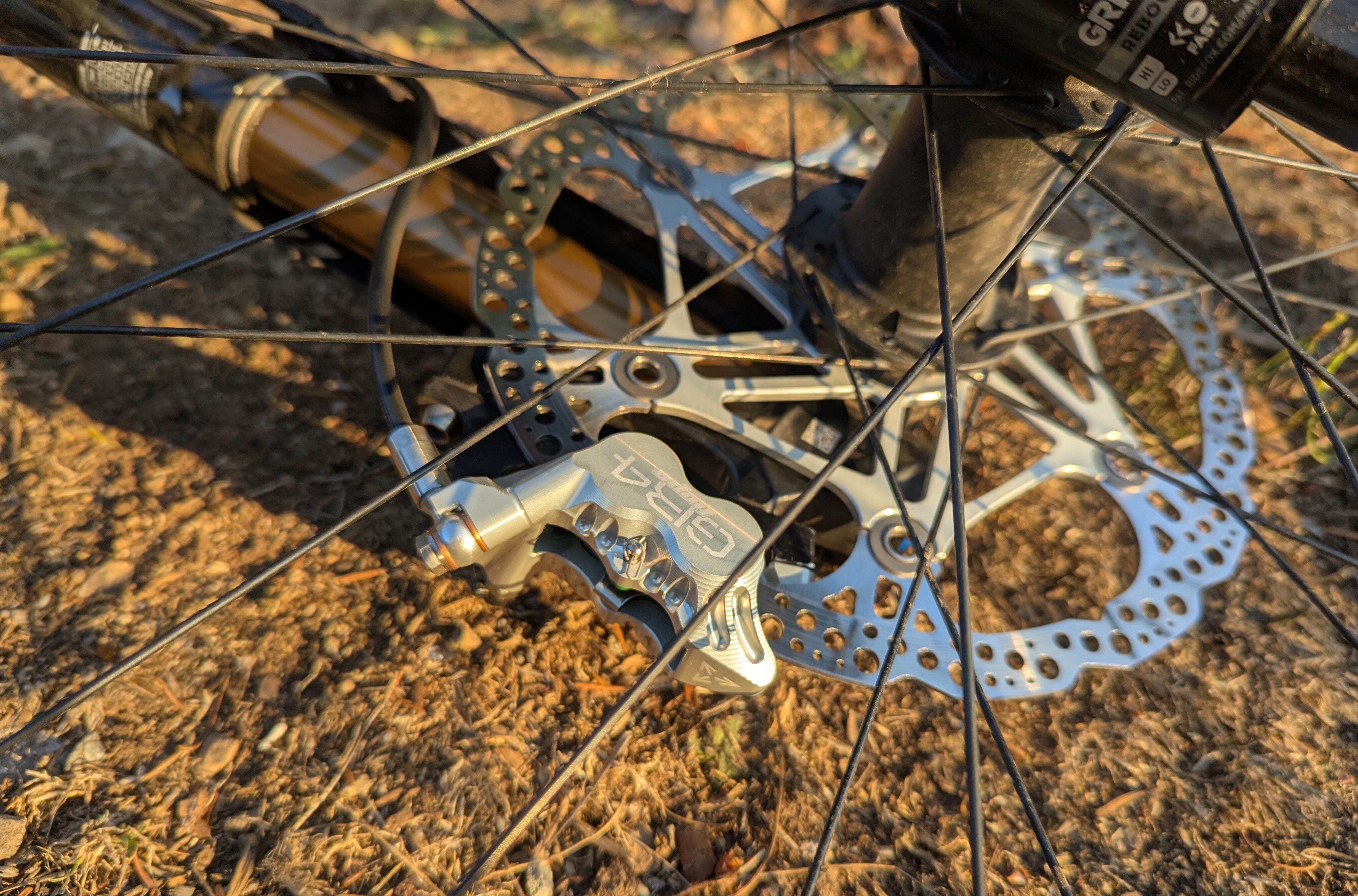
Flash Review: Hope EVO GR4 Brakes
Hope’s new GR4 brakes look more like an evolution of the Tech 4 V4 that they replace than a ground-up redesign, but there are a lot of changes lurking below the surface. Here’s our take on how they’ve added up after a handful of rides.
Blister’s Flash Reviews and Deep Dives are accessible to those who purchase one of our paid subscriptions
To get our comprehensive Deep Dives and our initial, unfiltered reports on new gear, become a member and receive many other services, deals, and discounts.
If you’re already an active member, please log in.
(If you’re already logged in and a member in good standing and seeing this message in error, please refresh this page in your browser.)

Well now I definitely regret getting the vented rotors… :(
No reason you can’t get the Evo lever linked to your existing V4 calipers!